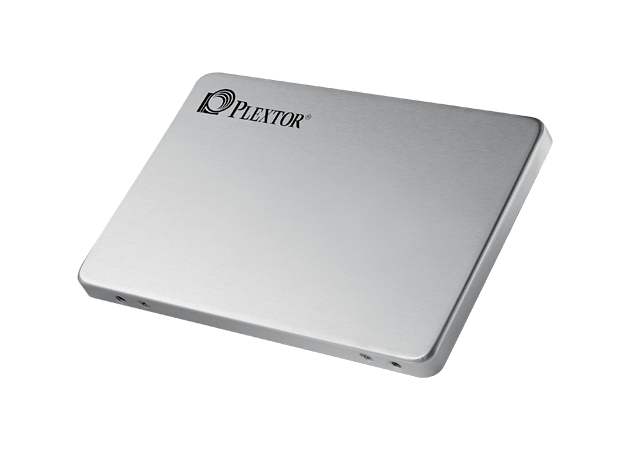Plextor Launches M8V SATA SSD
by Billy Tallis on February 1, 2018 7:00 AM EST
Plextor has introduced the M8V series, their latest budget SATA SSDs, now with 64-layer 3D TLC NAND. Plextor's budget SATA drives tends to use whatever controller and NAND combination makes the most sense at the time—they aren't limited to reference designs from the controller vendors, and instead Plextor and parent company Lite-On design their own drives and controller firmware. For this iteration, Plextor has chosen the Silicon Motion SM2258 controller and Toshiba's 64L 3D TLC NAND flash. Last time around with the M7V it was Toshiba 15nm planar TLC and a Marvell controller, and the preceding M6V used Toshiba 15nm MLC with the Silicon Motion SM2246EN controller. Silicon Motion's controllers have mostly been used with Intel/Micron 3D NAND recently, so the M8V will provide an interesting opportunity for comparison between two competing 3D NAND designs paired with the same controller.
| Plextor M8V Specifications | ||||
| Capacity | 128 GB | 256 GB | 512 GB | |
| Form Factor | 2.5" SATA and M.2 2280 SATA | |||
| Controller | Silicon Motion SM2258 | |||
| NAND | Toshiba 64-layer 3D TLC | |||
| Sequential Read | up to 560 MB/s | up to 560 MB/s | up to 560 MB/s | |
| Sequential Write | up to 400 MB/s | up to 510 MB/s | up to 520 MB/s | |
| 4KB Random Read | up to 60k IOPS | up to 81k IOPS | up to 82k IOPS | |
| 4KB Random Write | up to 70k IOPS | up to 80k IOPS | up to 81k IOPS | |
| Endurance | 70 TBW | 140 TBW | 280 TBW | |
| Warranty | 3 years | |||
In this product segment, Plextor is still sticking with capacities ranging from 128GB to 512GB and three year warranties. Write endurance is rated at a reasonable 0.5 drive writes per day, giving the M8V a total write endurance rating on par with most consumer SSDs that have five year warranties but are rated for only 0.3 DWPD. The M8V is available as a 2.5" drive with the model number M8VC, or as a M.2 SATA drive with model number M8VG.
Our 512GB sample just arrived and will take its turn on our SSD testbed soon.
Source: Plextor










10 Comments
View All Comments
Pork@III - Thursday, February 1, 2018 - link
Toooo small. Toooo slow. I feel like...live a 6 years ago. 128GB, 256GB volumes is normal for...2012. I thing that for 2018, 512GB must be a smallest volume per device in the market...With speed of read/write/copy X3 than 550MB/s.PeachNCream - Thursday, February 1, 2018 - link
Yup, 128GB is really too small for comfortable use as the only storage device in a computer. As for the speed, these are SATA drives so performance is going to stop at the point where the interface can't deliver more speed.damianrobertjones - Thursday, February 1, 2018 - link
But... but... What if I ONLY need 128Gb and don't want to spend more $$$£££? Heck I have a Surface Pro 3, with only 64Gb (Bare minimum) that's using a 200Gb microSD card as storage.Pork@III - Thursday, February 1, 2018 - link
Have you now seen how they force you, the free man, to buy one more device so you can comfortably enjoy the tablet, which should in principle be self-sufficient and for which you have already paid a decent amount of money.shabby - Thursday, February 1, 2018 - link
But but there's a nand shortage...qlum - Thursday, February 1, 2018 - link
128gb is perfectly fine for your average office computer or for someone who does not need much so I dissagree. Cheap 128gb drives most certainly have a place.voodoobunny - Thursday, February 1, 2018 - link
Yes, you're right, by now we should be able to get SATA devices that can perform faster 3X than the actual SATA III is capable of. Clearly they are deliberately crippling these devices to sell us incremental upgrades.sing_electric - Thursday, February 1, 2018 - link
What's the point in releasing more SATA SSDs when existing models can totally saturate that interface? There's plenty of 500GB SATA SSDs with an MSRP of $140 or lower (and street prices sometimes approaching $100).What we need are NVMe drives that can consistently get within 10% of the performance of a Samsung 960 that are at least 20% cheaper.
FunBunny2 - Thursday, February 1, 2018 - link
"What we need are NVMe drives that can consistently get within 10% of the performance of a Samsung 960 that are at least 20% cheaper."and how many years will it be until there are only 20 or 30 percent of motherboards with only SATA?
SunnyNW - Thursday, February 1, 2018 - link
"What's the point in releasing more SATA SSDs when existing models can totally saturate that interface?"To lower their own BOM.